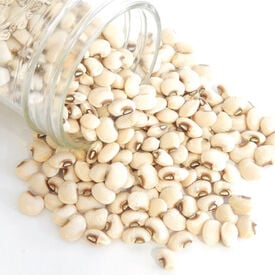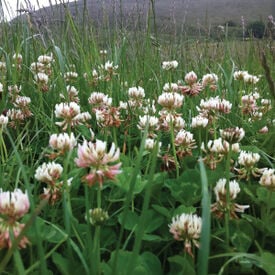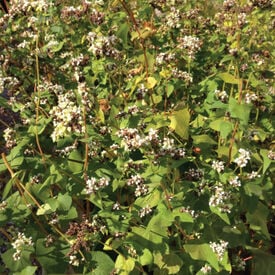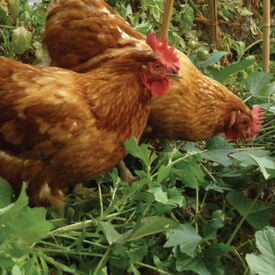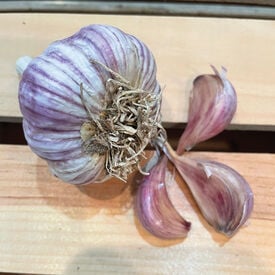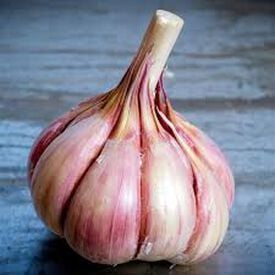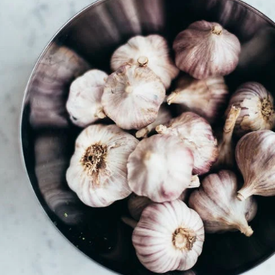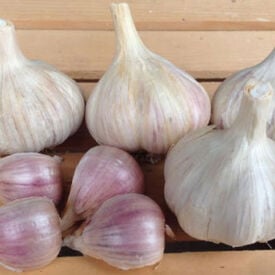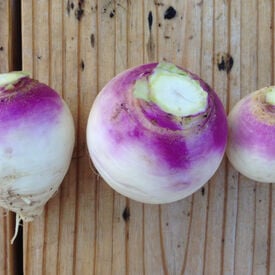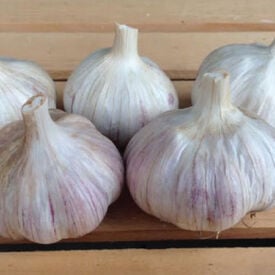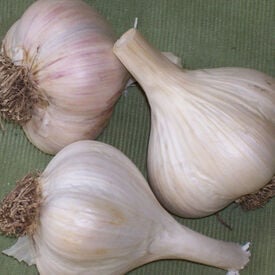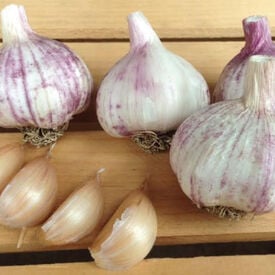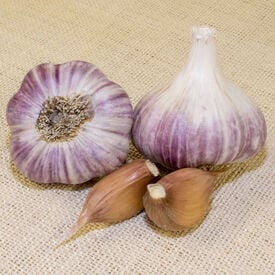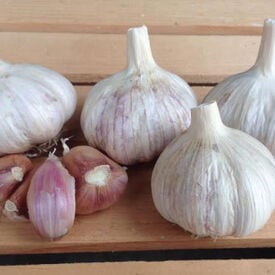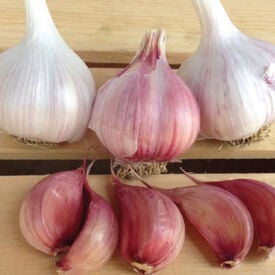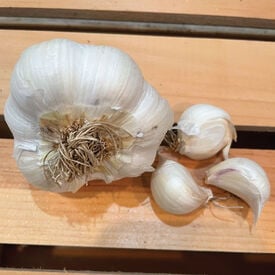The Big Boy Purplehull is a high yielding, popular Southern cowpea that is great for home gardens. Big Boy Purplehull is a long podded variety with 13-16 peas per pod that are light tan in color and oblong shape. This is a good garden variety and is very prolific. If you are using for Nitrogen fixation we highly recommend using a cowpea inoculant. Try with cowpea inoculant for maximum Nitrogen fixation.
The White Dutch Clover is a perennial clover variety that is a customer favorite for controlling erosion while protecting the soil! This legume is a living mulch of permanent cover that spreads by stolons. Grow low so takes close mowing and grazing. The White Dutch Clover benefits bees and insects as well as fixes nitrogen. Uses: Bees & Beneficial Insects, Chicken Forage, Deer Attractant, Erosion Control, Forage, Green Manure, Nitrogen Fixation, No Till, Weed Suppression
All of the seeds below are very good at attracting deer to your property! Buckwheat - Improves top soil and an effective choke weed! Plant late spring to early summer. Establishes quickly. Matures in 60 days. Accumulates phosphorus and and potassium for following crops. Frost sensitive. All below packages come in 1lb. bags. Crimson Clover - Winter annual protects and improves soil! Plant fall or early spring. A good nitrogen fixer (70-150 lbs per acre per year). Showy crimson blooms in late spring are an excellent source of nectar for bees. Inter-seeds well with grass. Austrian Winter Pea - A great cool season legume for cover crops, wildlife and winter grazing! Austrian winter pea, sometimes called "black pea" and "field pea" is a cool-season, annual legume with good, nitrogen-fixing capabilities. Austrian winter pea is a low-growing, viny legume which has been shown to fix over 200 pounds of nitrogen per acre per year. Peas - Grow regular old peas in your deer food plot. One of the most preferred vegetables for deer. Oats - Oats will kill off winter weeds and hold soil with a mat of vegetation! A high yielding oat that can produce over 100 bushels per acre. Plant anytime of the year. Deer will graze oats all year round. Barkant Forage Turnip - Great forage crop that provides high energy feed! Barkant turnips are an improved, early maturing, diploid turnip wtih a large purple tankard shaped bulb. Barkant turnips have a high leaf to stem ratio and and provide very high contentrations of protein, sugar content and leaf yields. Barkant Turnips are ideally suited for wildlife. Dwarf Essex Rape - A cabbage related plant that is a perfect grazer! Dwarf Essex Rape is a perfect grazer plant that will persist well after the first frost. Ready to pasture 6-8 weeks after sowing. Hairy Vetch - Sow with or without grain, grass or field peas! When sown late summer, grows fast and will attract wildlife. Hairy Vetch has rapid growth that makes it a good weed suppressant.
The Common Buckwheat is a grain that can be planted late spring to early summer and improves top soil and an effective choke weed! This variety establishes quickly and matures in 60 days. This buckwheat accumulates phosphorus and and potassium for following crops and is frost sensitive. Buckwheat (Fagopyrum esculentum Moench): Cool Season, Grain, Annual, Upright growth habit, Enhances soil P availability,Crude protein: straw 5%, grain 13% Uses: Bees & Beneficial Insects, Green Manure, No Till, Organic Matter (Biomass), Weed Suppresion
Growing your own forage for your chickens is a cheap, easy, and a highly nutritious way to feed your chickens. Chicken feed can be expensive to provide throughout the year. Growing your own from spring to fall provides high levels of nutrients that will make your eggs taste even better. Foraging chickens have a better balanced diet that creates better eggs and meat. This chicken forage blend is a mix of well balanced plants that chickens love to eat. Spread at 5 lbs. per 1,000-2,000 square feet. 100 lbs will cover 1 acre. Mixture includes: Annual Ryegrass, Perennial Ryegrass, Buckwheat, Flax, Millet, Forage Peas, Red Clover, Alfalfa
Bogatyr garlic are small and intense. Its bulb wrappers are thick and parchment-like with white skin showcasing purple and violet stripes. As you peel away the outer wrappers, the purple striping intensifies, becoming almost a solid mix of purple hues surrounding the cloves. A single bulb will house five to six plump cloves. The peeled cloves are creamy white and dense. Bogatyr garlic is known for its fiery, raw heat that diminishes quickly to a mild and pleasant flavor.
The Persian Star is a hardneck purple stripe type garlic. The outer skin can grow pure white with inner wrappers that are streaked purple. The red-tipped cloves with marbled streaks on whitish or yellow-brown background. The Persian Star is a very pleasant flavor with a mild spicy zing that is a great addition to any dish!
Yugoslavian garlic is considered a porcelain, which is a great storing garlic! This variety is hot & spicy and holds its shape and flavor well when cooked. Yugoslavian is regarded by some as the best if you like a good kick and is a hardneck variety.
Romanian Red garlic produces 4 to 5 large cloves per bulb. This variety's bulbs are a beautiful cream white with shades of purple skins. Once harvested, these whole bulbs will store for months. Romanian Red produces a delicious flavor that is pungent and long-lasting.
The Purple Top White Globe Turnip is a beautifully purple and white colored turnip that is the best tasting turnip around! This turnip variety has a fine grained root that can grow as big as a baseball! The popular Purple Top White Globe is an excellent yielding turnip that is a great fall crop that gets even better with cold weather.
The German Red garlic is an easy to grow garlic that is well suited for cold winters. This garlic variety offers a strong, spicy and robust flavor with large, easy to peel cloves. Averages 14 cloves per bulb. Hardneck variety.
Georgian Crystal garlic has a rich flavor and mild heat for a Porcelain hardneck. When slow roasted this variety, it has an amazing buttery flavor that melts in your mouth! This garlic grows well throughout the USA, but even better in areas with hot summers. Averages 4-5 cloves per bulb.
Georgian Fire garlic is a certified, farm favorite with a stunning flavor and cloves! This garlic variety has the classic garlic porcelain sheen and flavor. The Georgian Fire variety is the beauty queen of the garlic world. Its cloves grow large and average about 6 to 8 per bulb. This garlic can be eaten raw as they have a pleasantly hot flavor. Roasting really brings out the flavor of Georgian Fire! Porcelain hardneck type. Approximately 10 garlic bulbs per pound.
The Siberian garlic is certified and does great in cold weather! Siberian is a mid-season garlic and a great producer in cold climates. This variety does great for all northern gardeners! The cloves of this garlic are protected by an attractive light red skin. This clean, medium-to-strong flavored garlic will warm your soul on the coldest winter evening! Siberian has a very high allicin content, possibly the highest of any garlic. Allicin supports normal cholesterol levels, boosts the immune system, and enhances circulation! Approximately 12 garlic bulbs per pound. Approximately 4-5 cloves per bulb. Hardneck Garlic
Russian Red garlic has big bulbs that have a slightly purple skin that wraps the bulbs and cloves. This variety is a great garlic to grow for soil conditions that are slightly damp. Russian Red is one of the most flavorful heirloom garlics we offer. Approximately 6-9 cloves/ bulb. Approximately 45-60 garlic cloves/ pound.
Italian Red is a certified, great tasting and excellent storing garlic! Italian Red Porcelain is the garlic variety that is widely grown throughout the United States originating in California. Early Italian Red hardneck garlic is a very heat-tolerant porcelain-type garlic that can be planted in spring in northern gardens for a fall harvest! This garlic variety produces 6-10 large cloves per bulb that are fairly mild with a little garlic spiced flavor which intensifies during storage.
Chesnok Red garlic is one of the best baking garlic's available! This variety is a fantastic garlic that holds its shape and flavor well when cooked. Its stores well. Chesnok Red is regarded by some as the best all around garlic variety as it has a very beautiful red color.
The Inchelium Red garlic has won many awards with its delicious flavor of a soft-neck variety. This mild flavored garlic can be used in many different dishes. This large, top-quality softneck was discovered on the Colville Indian Reservation in northern Washington. Stores very well for 6-9 months. Mid-season, Artichoke type.
